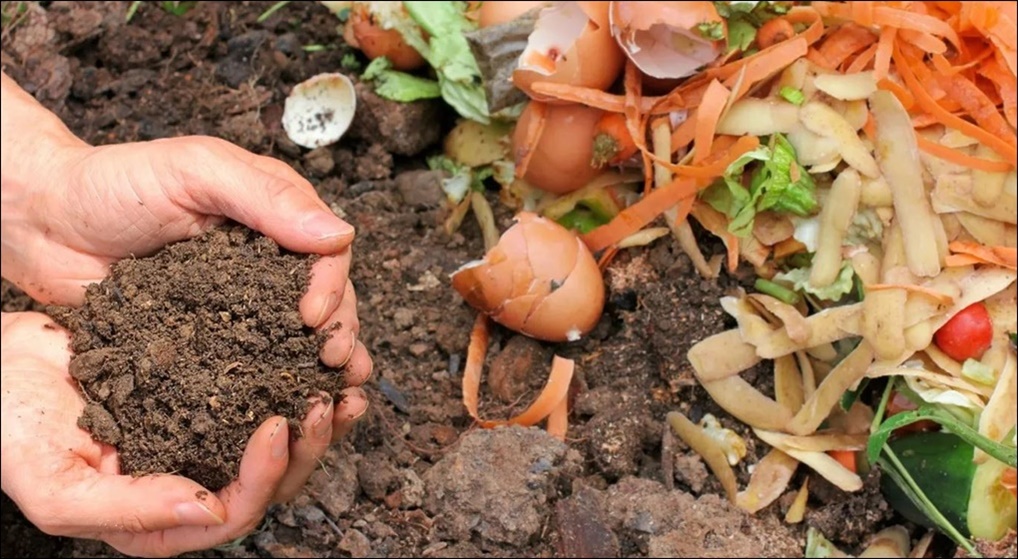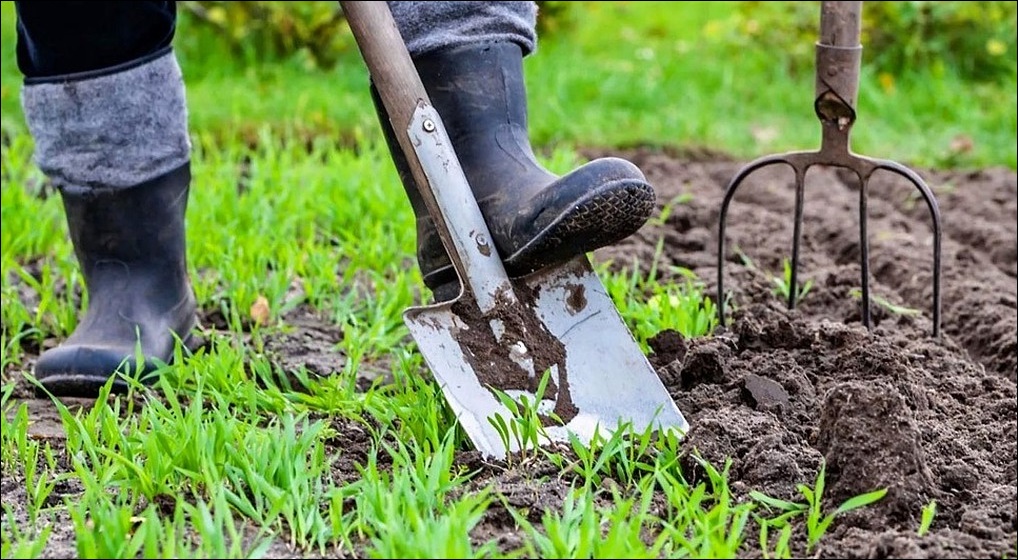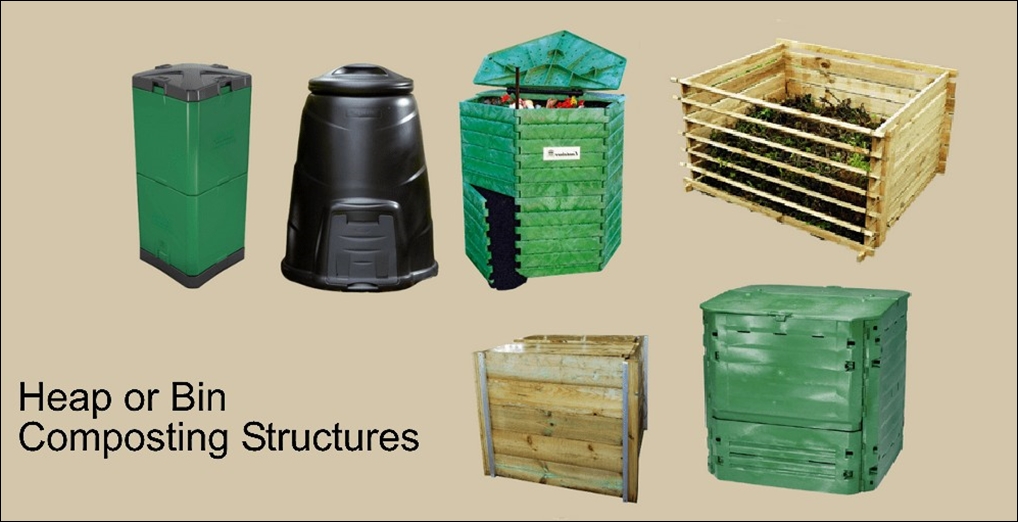The Benefits of Composting – Organic materials buried in landfill sites contribute to about 38 per cent of Canada’s total greenhouse gasses. Soil erosion can create new sources of pollution when nutrients, sediments and chemicals are carried into waterways. Recycling and composting of organic materials makes a positive environmental difference by reducing pollution and the need for chemical fertilizers.

.
What is Compost ?
Gardeners have used compost for centuries to improve their soil and help plant growth. Incorporating compost into light, sandy soil helps it hold both moisture and nutrients while adding it to heavy soil improves drainage. Compost is a natural fertilizer and soil conditioner made from organic materials such as kitchen scraps and garden waste. When put into a pile, these materials naturally decompose, turning into a rich, soil-like material called compost or humus. Composting binds soil particles together, improves water retention and provides essential organic matter for the soil, which is of fundamental importance to its heaths, vitality and fertility.
Gardening Questions ? Visit our Knowledge Base
Composting Basics
The single most important ingredient for healthy and productive soil is compost. All composting requires three basic ingredients. Browns (Carbon) – materials such as dead leaves, branches, twigs, cardboard and paper provide carbon to your compost. Greens (Nitrogen) – grass clippings, vegetable waste, fruit scraps, and coffee grounds provide nitrogen. Water – the right amount of moisture combined with greens and browns is important for compost development.
.
| What Not To Compost And Why | ||
| Black walnut tree leaves or twigs release substances that might be harmful to plants. Coal or charcoal ash might contain substances harmful to plants. Dairy products (e.g., butter, milk, sour cream, yogurt) and eggs create odour problems and attract pests such as rodents and flies. Diseased or insect-ridden plants might survive and be transferred back to other plants. Fats, grease, lard, or oils create odour problems and attract pests such as rodents and flies. Meat or fish bones and scraps create odour problems and attract pests such as rodents and flies. Pet wastes (e.g., dog or cat feces, soiled cat litter) might contain parasites, bacteria, germs, pathogens, and viruses harmful to humans. Yard trimmings treated with chemical pesticides might kill beneficial composting organisms. | ||
.
How To Create Compost
Piling 4 to 8 inch thick layers of green and brown materials in a composting structure is a good way to start. Adding an additional thin layer of soil on top of each green and brown layer plus a bit of water optimizes the decomposition process.
Regular turning of the material every 4 to 7 days with a shovel or pitch fork helps distribute air and moisture evenly and ensures efficient composting. As the compost starts to mature, it may need to be turned less often.
Read Also About: How to Plant Shrubs and Trees Correctly
While most of the moisture in a compost pile should come from rain, it may need to be watered occasionally to help keep it moist. When the pile becomes soggy or it starts to emit odour it needs turning or more brown materials added to remove excess moisture.
Uses For Compost
The Benefits of Composting and its applications are endless. Compost can be used around a home to add nutrients to lawns, trees, shrubs, vegetable garden, potted plants and more.

.
1. Amending Soil – Compost can be used to improve soils everywhere in a garden and it should be done before planting, in spring or early summer. The soil should be dug in or tilled to a depth of 2 to 4 inches.
2. Compost Tea – Compost tea can be used as liquid fertilizer on your garden plants. Making this ‘tea’ is simple as it only requires a shovel of compost placed in a burlap sack and steeped for 2 to 5 days in water.
Read Also About: Summer Blooming Plants
3. Lawn Top Dressing – Lawn top dressing is quite literally a top layer of compost added to grass. Once added to the top of the lawn, it will work its way into the soil as the grass begins to grow. Top dressing should be added during the spring or at the end of the growing season to create healthier soil that will hold water better and keep grass vibrant green.
4. Mulch – Compost is an ideal mulch alternative that can hold moisture and add nutrients when spread around trees, shrubs, and plants. Added once or twice annually, the compost will be regularly boosting the soil’s fertility.
.
Composting Structures
The first step to composting is determining where to place a compost heap or bin. An outdoor location with partial shade and removed from animals, including pets and wildlife is ideal. To save space, keep a yard looking neat and speed up composting time, compost should be contained in some type of structure.

.
Unenclosed compost piles usually spread out and become unsightly. Enclosed structures encourage faster composting as the outer portion of the pile acts as an insulator that creates higher temperatures near the center. The style of structure depends on how much space is available.
There are many types of manufactured structures available through garden centers or they can be ordered online and delivered to your door. Do-it-yourself structures can be made from cement blocks, brick, wood, woven wire fencing, metal posts or other materials. Wood should be painted to resit rot but not pressure treated with a harmful wood preservative..
It is up to you to decide which composting method fits best your lifestyle. Fortunately, composting is incredibly easy, environmentally friendly and it is a treat for your garden. For more information about the The Benefits of Composting, ask the friendly and knowledgeable staff at Nicholas Alexander – Vernon’s New Home and Garden Center of Choice !